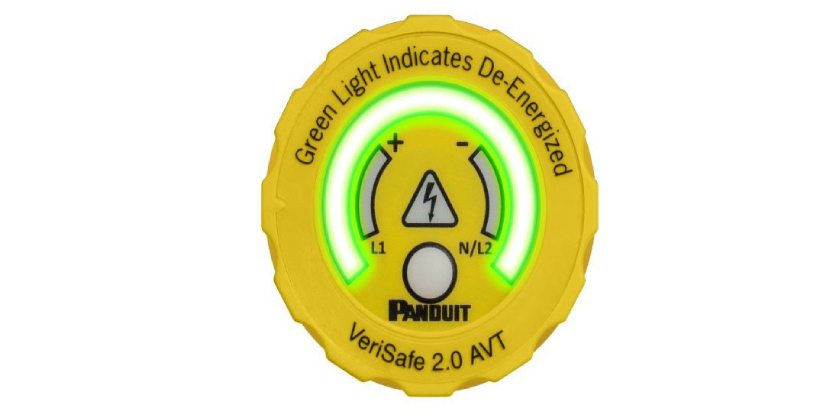Panduit Launches Improved VeriSafe 2.0™ Absence of Voltage Tester
VeriSafe 2.0 AVT features an expanded set of applications, including real-time diagnostics and performance reporting
January 6, 2023

The new VeriSafe 2.0 Absence of Voltage Tester (AVT) from Panduit leverages the same test in the existing Verisafe AVT, but with many new features and expanded applications. With the push of a button, workers can quickly determine voltage status and see an active indication when the absence of voltage is confirmed. The automated test minimizes risk by verifying the absence of voltage before equipment is accessed, making it easier for workers to verify an electrically safe work condition. This provides a new and innovative way to test for the absence of voltage safely, reliably, and efficiently without exposure to electrical hazards.
Panduit’s VeriSafe 2.0 AVT also satisfies criteria in NFPA 70E 120.5(7) Exception1 and CSA Z462 4.2.5 (g) Exception 2. Like its predecessor, it is also a UL 1436 listed AVT. VeriSafe 2.0 AVT is a fail-safe design with active indications, redundant channels for measurement and detection, and delivers safety functions including SIL 3 (IEC 61508-1).
The VeriSafe 2.0 AVT is rated for environments up to 1000 VAC and 1000 VDC. The AVT test can either be powered by use of a battery or auxiliary power source. Additionally features include a dedicated DC/single-phase faceplate, battery free indicator module, dual indicator functionality, voltage presence contacts, and networking.
VeriSafe 2.0 is more than an absence of voltage tester, utilizing solid-state signal outputs for both voltage presence and absence of voltage indications; and real-time diagnostics and performance reporting with the VeriSafe 2.0 Network Module.
Panduti’s VeriSafe AVTs can be used in many environments including:
- Power distribution, motor control, and automation
- Data centers, industrial, and commercial facilities
- Indoor or outdoor use
Finally: An Innovation in Electrical Safety.
Tired of voltage detectors? VeriSafe AVTs test for the absence of voltage with the push of a button. The VeriSafe AVTs meet the NFPA 70E and CSA-Z462* best practice for testing for absence of voltage enabling your plant to operate safer, smarter, and more efficiently.
*NFPA 70E 120.5(7) Exception 1 and CSA Z462 4.2.5 (g) Exception 2
VeriSafe 2.0. Safer. Smarter. More Efficient.
NFPA 70E and CSA Z462 allow portable testers or absence of voltage testers to be used when verifying an electrically safe work condition
Learn more about Panduit’s VeriSafe 2.0 Absence of Voltage Tester
Why is it important to test for the absence of voltage?
De-energizing equipment, following adequate lockout/tagout procedures, and verifying the absence of voltage are key components to establishing an effective foundation for an electrical safety program. Even though there has been significant progress in bringing awareness to electrical hazards in the workplace and the importance of establishing a strong electrical safety program, the electrical injury rate remains stable. Employees performing service or maintaining equipment can be exposed to grave physical harm or even death if hazardous energy is not properly controlled.
Following an effective electrical safety program, properly de-energizing equipment, and verifying the absence of voltage before performing work can help to reduce the possibility of a dangerous electrical incident. However, the critical step of verifying the absence of voltage is often overlooked or performed incorrectly because the process is time consuming and cumbersome. This paper examines the challenges surrounding the voltage verification process and offers a solution that improves electrical safety by reducing the likelihood of distraction and human error.
More Information
Read Safely Testing for Absence of Voltage for additional insights into this topic









